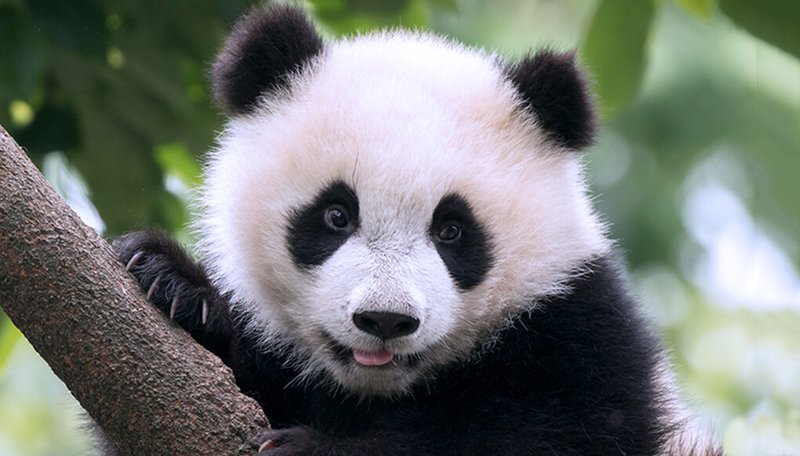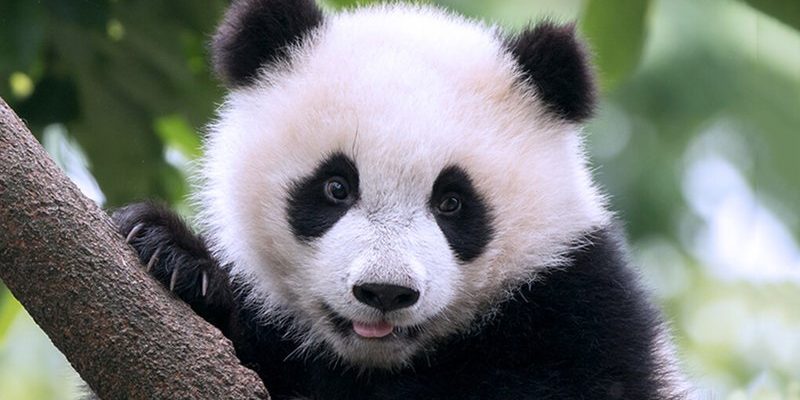
So, what does it mean to be endangered? In simple terms, it means that these creatures are at risk of disappearing entirely. It’s like watching your favorite movie and suddenly realizing the main character might not make it to the end. If we look closely, we see that the giant panda’s journey has been fraught with challenges that we should all pay attention to. Let’s dig into why the giant panda is endangered and what’s being done about it.
What Makes the Giant Panda Endangered?
Understanding why the giant panda is classified as endangered involves looking at several key factors. First and foremost, habitat loss is a big player. Pandas naturally inhabit the bamboo forests of China, but these areas are shrinking. As towns and cities expand, the forests are cut down for agriculture and development.
Additionally, pandas are incredibly picky eaters. They rely almost exclusively on bamboo, which only grows in specific areas. If their habitat is destroyed or fragmented, finding food becomes a real challenge. Imagine being in a huge mall but only having access to a small café—after a while, it gets pretty grim.
Next is climate change. As temperatures rise, the bamboo pandas need might not thrive as well in warmer climates. This problem is compounded by the fact that pandas have a limited range, meaning they can’t just move to a more suitable environment. It’s like being stuck in a car with no gas in the middle of nowhere—pretty frightening, right?
The Role of Conservation Efforts
Efforts to save the giant panda have ramped up significantly over the years. China has designated many panda reserves that protect their habitats. These reserves act like sanctuaries, helping to preserve the lush bamboo forests pandas call home.
In these areas, conservationists work tirelessly to monitor panda populations, educate locals, and promote sustainable practices. It’s a community effort! Local people learn how they can coexist peacefully with pandas, which helps reduce conflicts over land. This is crucial because protecting the pandas isn’t just about saving the animals; it’s about protecting their home and the balance of the ecosystem.
Moreover, breeding programs in captivity have had success. By carefully breeding pandas in zoos, conservationists are ensuring a healthy gene pool while also introducing some of these adorable creatures back into the wild. It’s a bit like a carefully coordinated reunion—bringing together family members who’ve been apart for too long.
Success Stories: The Panda’s Comeback
You might be surprised to learn that despite the challenges, giant panda populations have seen some positive changes in recent years! Thanks to conservation efforts, pandas were reclassified from “endangered” to “vulnerable” in 2016. This is a big deal and a testament to the hard work of many individuals and organizations.
For example, the Sichuan province in China has become a model for panda conservation. This region has not only increased the number of protected areas, but it has also improved forest management systems. By creating corridors that connect fragmented habitats, pandas can move freely between areas to find food and mates. This connectivity is crucial, almost like a bridge that allows them to visit friends and family on the other side of town!
Challenges Still Ahead
Although there are hopeful trends, significant challenges remain in safeguarding giant pandas. Climate change is an ongoing threat that can impact bamboo growth and ultimately the pandas’ survival. Their unique needs mean they are particularly vulnerable to shifts in their environment.
Another challenge is human encroachment. As cities continue to expand, the delicate balance between human development and wildlife protection becomes crucial. Each new road or building can cut off a panda’s access to food and mates, leading to decreased genetic diversity and population health.
Here’s the thing: while efforts are being made, they require ongoing support and awareness. Everyone can play a part, from reducing our carbon footprints to advocating for conservation programs. It’s like tending a garden—if we don’t keep nurturing it, things can quickly go awry.
How Can You Help Protect Giant Pandas?
If you’re passionate about helping giant pandas, there are plenty of ways to get involved. Here are a few ideas:
- Support Conservation Organizations: Donating to groups focused on panda conservation can make a real difference. Organizations like the World Wildlife Fund (WWF) work tirelessly to protect pandas and their habitats.
- Adopt a Panda: Some zoos and organizations offer adoption programs. You can contribute financially to the care of a panda and learn more about their lives.
- Spread Awareness: Share what you learn with friends and family. The more people know about the challenges pandas face, the more likely they are to get involved.
- Practice Sustainable Living: Simple changes in your daily routine—like using less plastic or supporting sustainable products—can have a broader impact on the environment.
Every little bit helps! Remember, being part of the solution means being aware and taking action, however small it may seem.
The Promise of Global Cooperation
One of the most hopeful aspects of giant panda conservation is international cooperation. China has welcomed researchers and conservationists from around the world to study pandas and share best practices. This collaboration is critical, as it fosters a greater understanding of how to best protect these animals globally.
Additionally, educational programs have sprung up worldwide, raising awareness about the plight of the giant panda. Schools and zoos often sponsor events to teach kids about wildlife conservation. It’s inspiring to see the younger generation getting involved, learning that they can make a difference—no matter how small.
A united effort can tackle the issues threatening giant pandas. Imagine if everyone came together, like a flash mob, each person playing a part to save these incredible creatures!
In wrapping up, the story of the giant panda reflects the struggles many species face today. While we celebrate the progress made, we must remain vigilant. The journey to recovery is ongoing, and we need to ensure that future generations can also enjoy the sight of these gentle giants.
The fate of the giant panda rests not just with conservationists in China, but with all of us. By understanding the importance of protecting their habitats and advocating for sustainable practices, we play a part in this global effort.
So, the next time you see a panda picture on social media or in a zoo, remember: their story is one of hope, teamwork, and the ongoing fight for survival. Let’s work together to ensure that these beautiful creatures continue to thrive for years to come.

